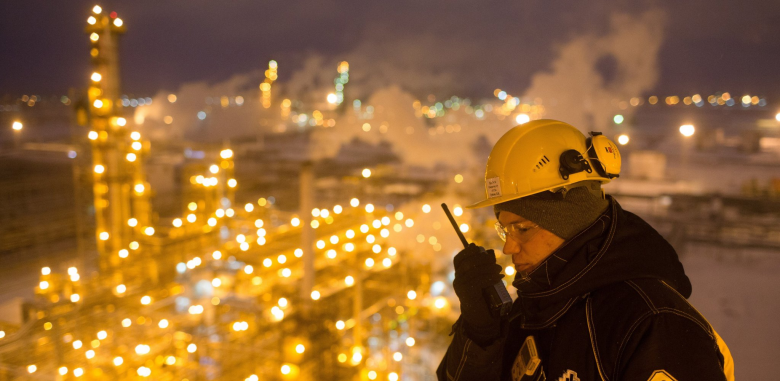
URALS QUALITY WILL DOWN

PLATTS - The quality of Russia's key Urals crude exports towards Europe will continue to fall next year as more of the country's low-sulfur oil flows are diverted eastward to China, Russian national oil pipeline operator Transneft warned Monday.
Predicting a 2% rise in crude exports by Russian companies next year, Transneft said the sulfur content in its westbound export flows will reach "a critical level" this year, as the company has no further technological tools to improve the quality of crude flows headed west towards mostly European customers.
"Due to a [planned] rise in low-sulfur crude supplies to China, there will be no more low-sulfur volumes available for improving crude quality via other directions," Transneft's vice-president Sergei Andronov said Monday.
The increase in sulfur levels in Urals as Russia exports more premium crude through outlets in the far east of the country has long been predicted, and may support prices for rival crude grades such as neighboring Kazakhstan's high-value CPC crude.
The latter is exported through the Russian port of Novorossiisk via the CPC pipeline, which, unusually, is not owned by Transneft, but by an international consortium.
The rise of alternative crudes around the eastern Mediterranean, including CPC, Azeri and Kurdish crudes, has already depressed demand for Urals in recent years, pushing it to further flung destinations.
At the request of the energy ministry, Transneft maintains the quality of crude delivered to domestic refineries stable, at around 1.63% sulfur since 2014, Andronov said.
Increasing sulfur content poses a high risk to domestic refining because Russian refineries are only equipped to process crude with less than 1.8% sulfur.
As a result, the sulfur content in export flows rose to 1.61% from 1.51% over the same period, he said.
As a solution to the problem, Transneft has offered to direct high-sulfur crude into a separate export flow to Ust-Luga, but the energy ministry is reluctant to approve this plan. Sulfur content in ESPO blend remains at around 0.5%.
EASTWARD EXPANSION
Eastward, crude exports via the Skovorodino-Mohe pipeline offshoot from the ESPO pipeline network to China are set to grow to 28.5 million mt in 2018, up from over 16 million mt this year, as Russia and China have mainly completed the expansion of the route, first vice-president of Transneft, Maxim Grishanin, said speaking during the same event.
In 2019, crude deliveries via Skovorodino-Mohe are to reach designed 30 million mt/year, he said.
Russia's top producer Rosneft exclusively supplies crude via the route to CNPC, under two intergovernmental agreements, with the deliveries launching in 2010.
The East Siberia-Pacific Ocean (ESPO) pipeline ships crude to Skovorodino and further on to the Kozmino port on the Pacific coast, from which mainly spot cargoes are exported.
Transneft plans to complete the expansion of the entire ESPO network in 2020, bringing Kozmino's capacity to 50 million mt/year, up from around 35 million mt/year currently, in 2019.
Transneft also expects to complete the expansion of the pipeline offshoot from ESPO to Rosneft's Komsomolsk -on-Amur refinery to 8 million mt/year from 6 million mt/year currently in the second quarter of 2018, Grishanin said.
Looking ahead, Transneft said it expects crude exports by Russian companies to grow by around 1.8% year on year in 2018 to 242.4 million mt, or around 4.87 million b/d, according to preliminary shipping requests by domestic oil producers.
Andronov said Transneft expects deliveries in the western directions to reduce as around 10-12 million mt of crude will be redirected towards eastern markets in 2018.
"We think that westbound exports most likely reduce at the Primorsk and Ust-Luga ports [on the Baltic Sea], as crude supplies via the Druzhba pipeline are carried out mainly via long-term contracts," he said, speaking at a company event.
-----
Earlier:

2017, November, 20, 09:25:00
ЦЕНА URALS: $59,62182Средняя цена на нефть Urals за период мониторинга с 15 октября по 14 ноября 2017 года составила $59,62182 за баррель, или $435,2 за тонну.
|

2017, July, 7, 07:30:00
ЦЕНА URALS: $50.3Средняя цена нефти марки Urals по итогам января-июня 2017 года составила $50.3 за баррель. В 2016 году средняя цена на Urals в январе-июне составила $37,85 за баррель. Средняя цена на нефть марки Urals в июне 2017 года сложилась в размере $45,65 за баррель, что в 1,01 раза ниже, чем в июне 2016 года ($46,49 за баррель).
|

2017, February, 2, 19:00:00
URALS: $53.16Средняя цена нефти марки Urals в январе 2017 года составила $53,16 за баррель, что в 1,8 раза выше, чем в январе 2016 года. В январе 2016 года средняя цена нефти марки Urals составила $ 28,75 за баррель.
|

2017, January, 11, 19:05:00
URALS: $41.9Средняя цена нефти марки Urals в 2016 году составила $41,9 за баррель.
|

2016, November, 30, 18:30:00
ТОРГИ URALS«Прямые котировки нефти марки Urals – это то, что необходимо российской нефтяной отрасли, чтобы занять достойное место в мировой системе ценообразования на энергоносители. Важно, что ценообразование на экспортируемую российскими компаниями нефть будет осуществляться в Российской Федерации и сорту Urals будет придан тот заслуженный вес, который он де-факто занимает в международной торговле нефтью.».
|

2016, August, 1, 18:25:00
URALS: $38.68Средняя цена нефти марки Urals по итогам января - июля 2016 года составила $38,68 за баррель.
|



